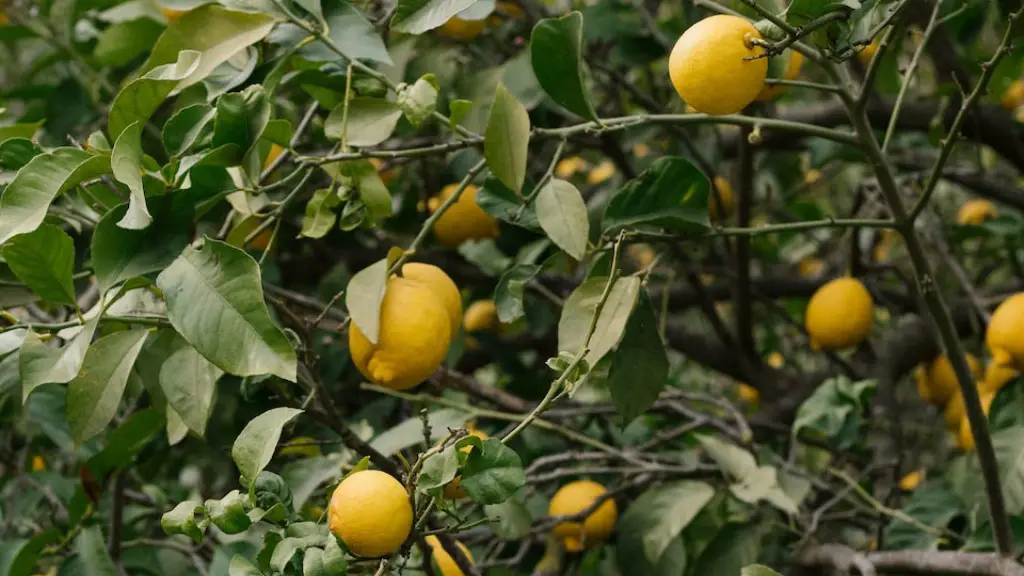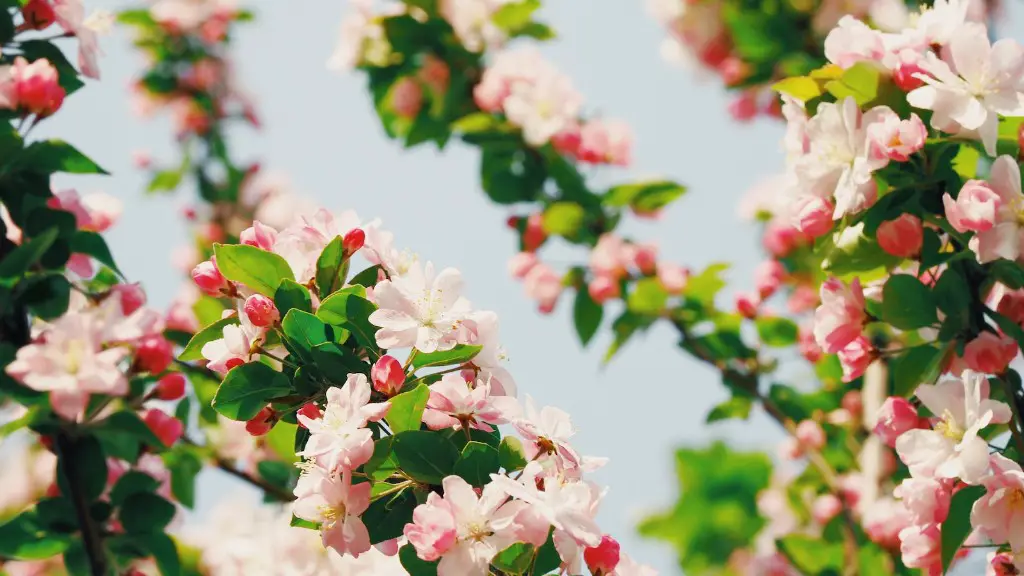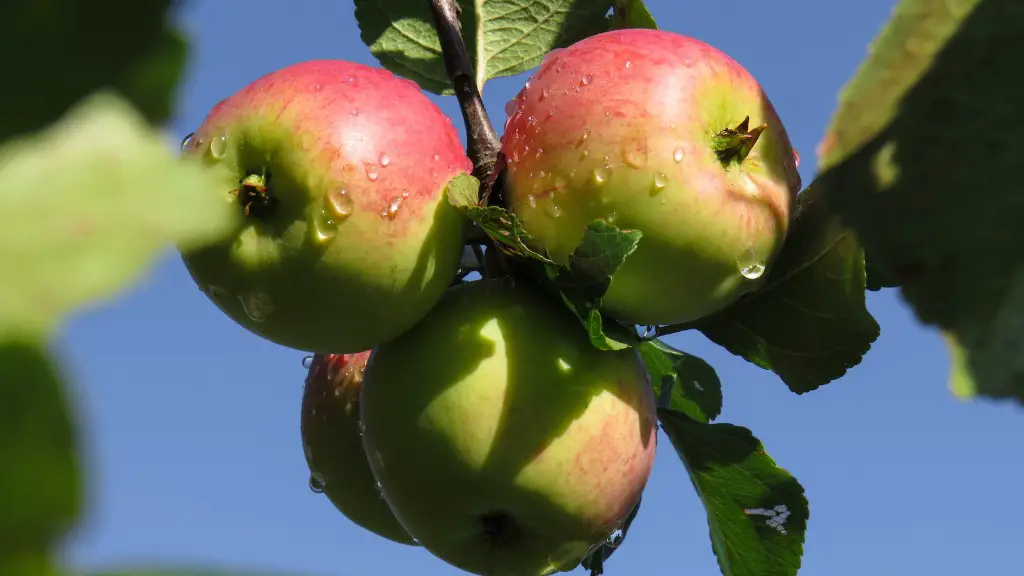For many generations, the avocado tree has been a staple of fruit production and consumption in countless countries around the world. From Mexico and Central America to parts of Africa and Asia, the spiky-skinned evergreen tree has become a popular fruit that is loaded with healthy essential fats, vitamins, and minerals. When it comes to the growth of the avocado tree, one of the most fascinating aspects of the process is when the avocado tree flowers.
The main time for avocado flowering is during the Spring season when the weather is perfect for the growth of the avocado tree. During this time, the branches of the tree are covered in small white stars or flower-like textures, each one varying in size depending on the variety of tree and other various factors. Most commonly, the flowers are observed with a light green hue, and by the time Summer season arrives, the flowers have pollinated and started to form small fruits that will eventually mature into the familiar avocado.
According to experts, avocados need perfect climatic conditions in order to mature and even the slightest bit of change in the weather can cause the avocado flowers to become dried. These experiences often occur during the bloom period, making the pollinated flowers fall and eventually leading to disruption in the production of avocados. Moreover, while some flowers are observed to be pollinated, other blooms may just not appear and if the pollination is not done correctly, the fruit production may also be affected as a result.
In some cases, it may not even be the climatic conditions themselves that cause problems in avocado flower production and pollination. Instead, it could be the presence of animals or insects in the orchards. These creatures can often cause irreversible damage to the flowers and in some cases, the entire tree is affected. Hence, it is crucial to ensure that the areas planted with avocado trees are properly fenced off or guarded against vandalism or possible infiltration by animals.
The size of avocado trees also greatly affects the quantity and quality of production. Different types of avocado trees reach different heights and often, mature trees tend to overshadow the younger ones due to the wider branches. This can prevent the flowers that are developing on the younger trees from receiving enough sunlight and ultimately, lead to the premature fall of the avocado flowers. Alternatively, if the trees are planted far apart, then this situation can be avoided and yields of perfectly ripened avocados can be expected.
Finally, some people opt to plant their avocado trees in containers or pots, allowing them to be slightly inclined towards the sun. This not only brings joy of having an ordered garden but also enables the avocados to get enough exposure to the sun and therefore, providing a great backdrop for the avocado flowers to grow successfully. Similarly, choosing a variety of plant can also greatly improve the chances of a better yield due to their respective characteristics.
Climate Affects Avocado Flower Production
When it comes to the production of avocado flowers, climate plays a major role in determining the quality and yield. Due to the knowledge in agriculture, farmers have been able to use plants and trees for good for many years now and the same applies to the production of avocado flowers. Depending on the climatic conditions, the budding and flowering of the avocados will either be slow or fast and to make sure that the production remains as expected, farmers have to keep an eye out for changes and make necessary adjustments.
For example, if the area experiences a lot of rainy days, then the flowering process is often hampered and leads to a decrease in the yield. Similarly, dry weather conditions can also be a hindrance and the flowers cannot sustain themselves and fall off before they can be pollinated. Hence, proper irrigation and water management is also immensely important for the growth of the avocado flowers.
Another critical aspect of climate when it comes to the avocado flower is the temperature. Depending on the variety of the tree, specific temperatures are necessary and any deviation from healthy temperatures can result in the flowers being dried out or powdery mildew, both of which will lead to decrease yields. To help manage this, experienced farmers keep an eye out for changes in temperature and manage the plantation in order to achieve the best possible yield.
Fertilizers Help in Avocado Flowering
The use of fertilizers is key in the growth cycle of avocado trees, especially during the flowering period. Along with managing watering, a fertilizer helps the avocado tree to receive the essential nutrients and minerals it needs to develop healthy flowers. Depending on the type of plant, different fertilizers provide unique benefits and establish a healthy and thriving orchard that is capable of producing avocados in abundance.
Some types of fertilizers that are popular for avocado trees are compost and manure. Both are rich with beneficial organic compounds and serve as natural sources of nourishment for the plant, providing it with the minerals that are necessary for the production of succulent and secure fruits. Additionally, nitrogen-rich fertilizers also help with the development of the avocado flowers and make sure that the process of pollination is carried out properly.
Moreover, the use of fertilizers also helps in improving the soil structure and its fertility. This makes it easier for the avocado tree to absorb natural minerals and obtain the necessary vitamins that are essential for the growth of healthy flowers. Harsh chemical fertilizers are often better avoided as they can be detrimental to the plant, but the application of organic fertilizers is the best practice to follow.
Integrated Pest Management Helps with Avocado Flowers
Apart from climate and fertilizers, taking the right steps to control pests is also important to ensure that the avocado flowers remain in good condition. Having an integrated pest management plan in place is not only necessary to safeguard the plantation from insect damage but is also crucial for creating an optimal environment for the avocado tree’s growth.
Integrated pest management includes practices like keeping the plantation space clean, trimming the trees, and using organic pest repellents like neem oil and pheromone traps. These practices can help keep the environment in control and away from potential insect incursions that could damage the flowers of the avocado trees. Special net covers may also be used if the area is vulnerable to birds as they can cause extreme damage by eating the flowers and spoiling the entire crop.
Likewise, the selection of plant varieties is also a factor when it comes to pest management. Over the years, farmers have developed plants that are resistant to disease and can be used for large productions. These plants often have thicker leaves and are immune to some of the most common pests that are known to affect avocado flowers. It is therefore, important for the farmers to take good care of their orchards and make sure that the trees are always in good condition.
Managing Avocado Flower Production
The management of avocado flower production is an essential part of the process, and there are certain measures that can be taken in order to optimize the yield. The careful application of fertilizers and pest control methods can help in this aspect, as well as the managing of water conditions and temperature. And while it is often beneficial to plant trees near one another, a certain distance should be maintained to ensure that the trees receive enough sunlight and do not overshadow each other, resulting in droopy flowers.
In some cases, container-sitting is also a good option to consider, as this helps to avoid over-fertilization and over-watering that can be detrimental to the tree’s growth. Finally, proper pruning or trimming of branches helps to maintain the tree in a healthy condition, enabling production of sweet-tasting and safe-to-eat avocados. In summary, diligent and knowledgeable caretaking is necessary for proper growth and harvest of avocado flowers.
Tree Lifespan Increase with Good Care
Another important aspect of managing avocado flower production is the care and protection of the trees themselves. When the trees are properly maintained, they become strong and healthy, able to produce succulent fruits and flowers for many years. The trees may still succumb to diseases and pests, but the damage they cause is significantly reduced by proper management techniques and adequate protection.
The average lifespan of an avocado tree is between 35 to 40 years and even with regular harvest, these trees can survive for decades and produce fruits season after season. Moreover, placing the trees in uncrowded spaces, avoiding heavy temperatures and humidity, and ensuring that pruning is done on a regular basis can also help in prolonging their lifespan.
Finally, protecting the trees and flower beds against animals and pests is another important factor. Not only are these creatures a nuisance and spoil the whole aspect of the plantation, but they also cause irreparable damage to the fruits, leaves, and flowers. To manage this, pest control teams should be hired and given access to the plantation often, to ensure that the pests are kept away and the trees remain healthy and thriving.
Organic Pesticides Promote Avocado Flower Quality
Organic pesticides are the best option when it comes to managing pests in an avocado plantation and maintaining healthy trees with bountiful flowers. Unlike chemical pesticides, organic pesticides are made with natural compounds and provide a safe environment for the plantation, without compromising on the quality and yield of the flowers.
Normally, organic pesticides are made from plant extracts, oils, and minerals. These components are developed such that they provide the necessary levels of protection to the trees and flowers, without having a negative impact on the environment. Additionally, organic pesticides are often used in combination with other measures such insect repellents, trapping, and modified sprinkler systems, ultimately helping to reduce the costs associated with pest control while providing maximum protection.
Moreover, when it comes to the quality of the flowers, organic pesticides can help in increasing the yield and preserving the plantation’s health. These compounds provide a layer of defense to the flowers, ensuring that they are not damaged by pests and can fertilize properly. Additionally, organic pesticides also help with controlling the flowering season of the plants, enabling the farmers to better manage their plantations and the timing of their harvest.
Improving Avocado Flower Quality
To make sure that the avocado flowers remain safe and secure, various measures may be taken. By keeping the plantation clean, controlling pests and insects, and protecting the trees from diseases, the flowers will have a better chance of developing correctly and producing a better yield of fruits.
Additionally, the use of fertilizers, soil additives, and the selection of specific varieties of trees are also important for improving the quality of the flowers. The careful arrangement of the trees within the farm is also crucial, as it not only helps with the development of the flowers but also keeps the plantation in an orderly fashion. Finally, with proper care and protection, farmers will be able to maximize the potential of their plantations and produce a high quality and abundant yield of avocados.




